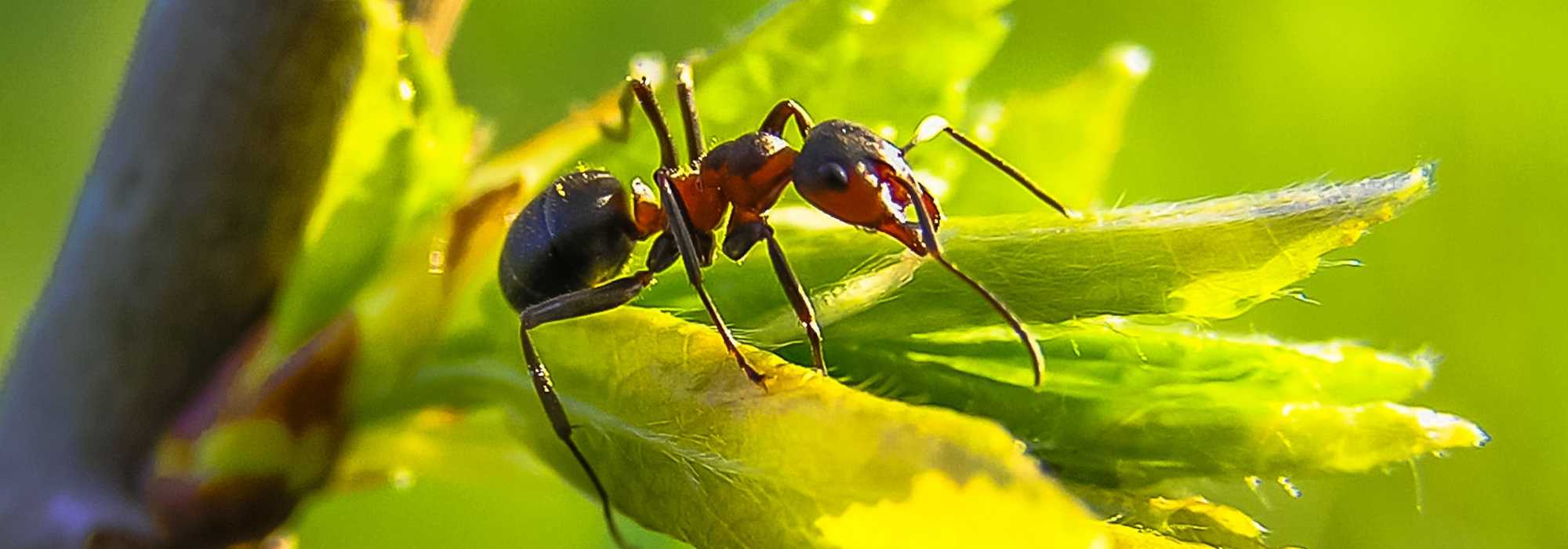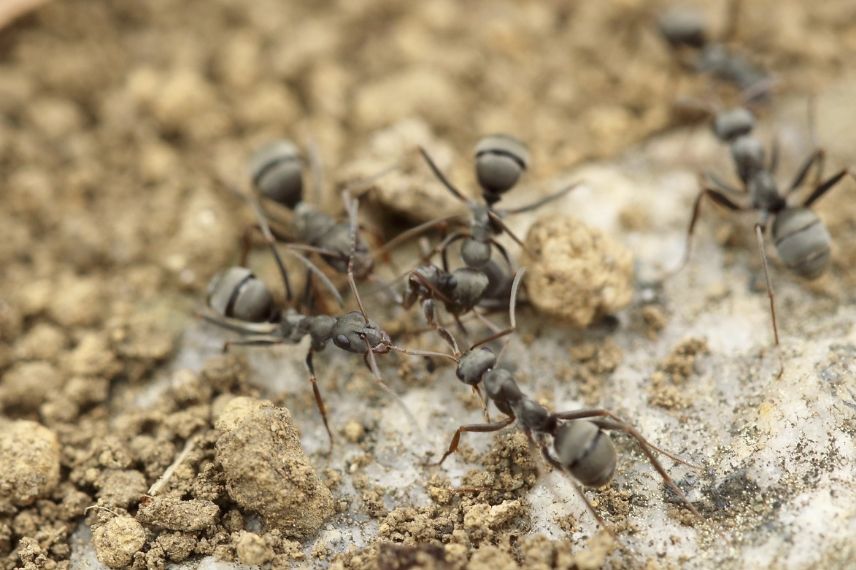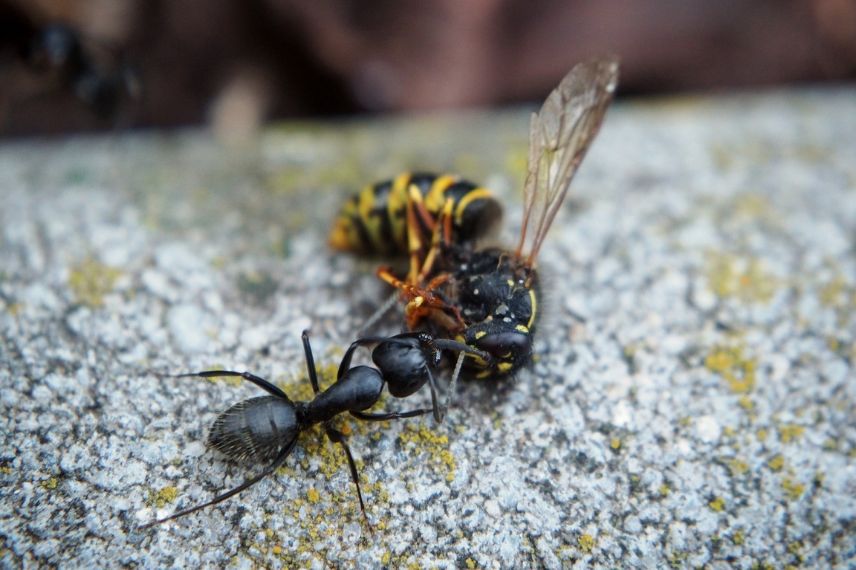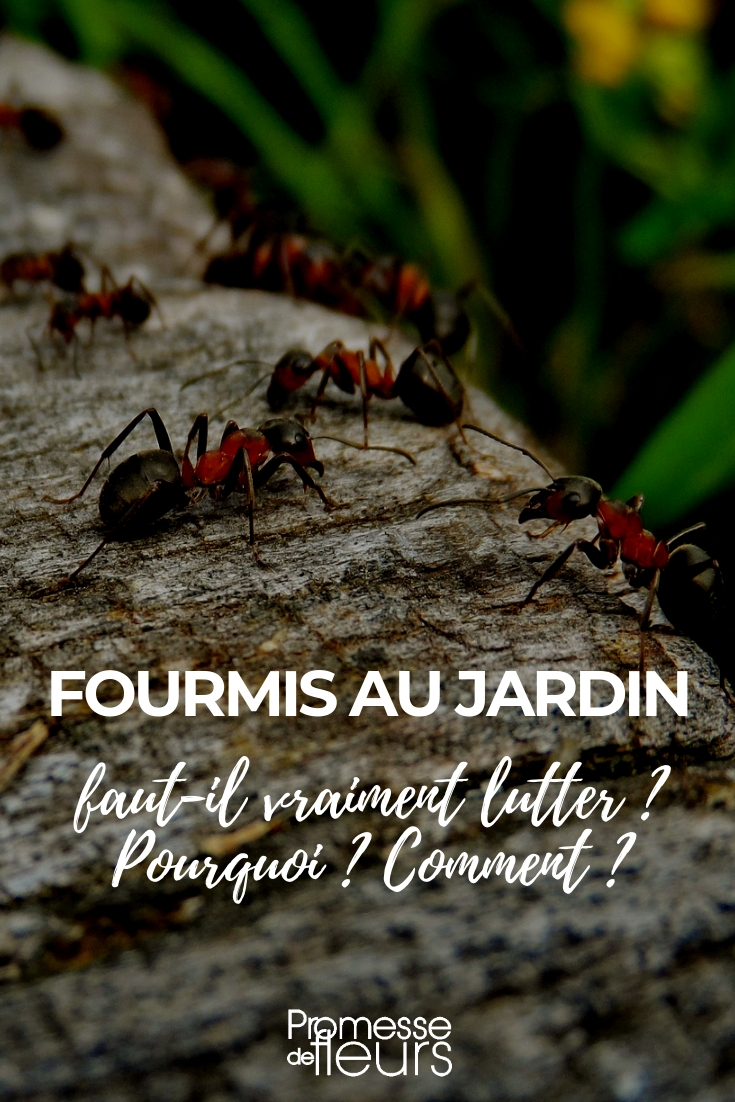
Ants in the garden: do we really need to fight them?
Why? How? Our answers!
Contents
Ants and gardeners… It’s a long story… of love? Mmm… No, probably not! Most gardeners lose their temper when they catch sight of the tip of one of their antennae and run around to eliminate them as quickly and effectively as possible… But often it’s through ignorance of this likeable little creature that they behave like this.
Are ants really a problem in the garden? Are all the legends that cling to its chitin really true? Can we simply leave them to live undisturbed without intervention? Find out everything in this advice sheet!
Ants are curious insects.
Ants are hymenopterans like bees and wasps and belong to the (large) family Formicidae. More than 13,000 ant species have been recorded worldwide to date. And we’re undoubtedly still far from the full count… Ants are found worldwide except in Antarctica and Greenland. So, of course, in our gardens too!
They are eusocial insects, meaning they form social groups divided into castes with some fertile individuals and others sterile. This is why some ants have wings: queens and males, which are the fertile ants, leave the colony to reproduce. And others do not: workers, soldiers, … which are sterile and remain in the ant nest for life. But “winged ants” are by no means a separate species.
Ants are fascinating insects and their way of life would require several full-length books. They are, moreover, the subject of in-depth behavioural studies.

Oli’s little note: prefix “myrmeco” refers to ants. Thus “myrmecofauna” refers to part of fauna made up solely of ants (nearly 10% by weight of total fauna of a natural medium), while a “myrmecologist” is a scientist who studies ants, …
Read also
Aphid: identification and treatmentRole of ants in the garden
Ants, by virtue of their numbers and way of life, play a huge ecological role in nature and in the garden.
-
An important predatory role…
Ants are formidable predators of many larvae, caterpillars, worms, insect eggs and other garden “pests”. They therefore help gardeners in their endless and often futile battle against pests of all kinds.

Ants have an undeniable ecological role in the garden!
-
… and as prey
But ants also represent a prized food for many garden animals: insectivorous birds (green woodpecker, dunnock, tits…), spiders, small mammals notably shrews, …
-
Soil aerator
Ants dig numerous galleries and consequently aerate soil. Don’t panic if you find an ant nest right where your favourite plant was planted. Ants won’t (much) damage its roots.
-
Myrmecochory
A chory is a mode of seed dispersal. There are several different chories (anemochory, hydrochory, ornithochory, …) but one of them, a variant of entomochory, is called myrmecochory. Plants using this type of seed dispersal enlist ants: violets, celandines, snowdrops, ramsons (wild garlic), European spindle, … These seeds have a fleshy elaiosome; ants eat this elaiosome while leaving the seed intact, which is thus moved.
-
Recycling of plant and animal waste
Ants recycle all garden waste: plant as well as animal. They thus enrich soil while preventing proliferation of diseases. Nearly 90% of animal carcasses end up in ant nests.
-
Mutualism and sym symbiosis with certain plants
Some plants live in mutualism or in sym symbiosis (difference being that sym symbiosis is obligatory while mutualism is not) with ants: carnivorous plants, cacti, bromeliads, acacias, … These plants are called myrmecophytes. For some of these myrmecophytes, the plant will offer protection to ants while the ants will provide it with insect carcasses: this is the case for certain carnivorous plants, a phenomenon called myrmecotrophy. For others, ants will protect the plant from potential pests while the plant will provide them with nectar. This is notably the case for wild cherry and acacias which attract ants thanks to glands producing nectar on the leaf petiole.
Downside of ants in the garden: aphids
Mutualism exists between certain ant species (in our area especially Lasius niger, the black ant) and certain aphid species: we remain in myrmecophily. This cordial agreement therefore provides benefits to both parties. Ants protect aphids from their natural predators, while aphids provide them with sweet honeydew rich in minerals and vitamins as food. In this particular case, one says ants rear aphids. But that is not always the case: other ant species can be aphid predators, just as yesterday’s “farmers” can suddenly become consumers of their stock overnight.
But as you will have understood, this rather singular phenomenon causes many problems in the garden.
Even though ants are not problematic in themselves (they do not eat plants and their galleries have no impact), their rearing of aphids is more problematic. Indeed, aphids, living in colonies sometimes very large, feed on plant sap, which weakens plants. Moreover, honeydew secretion, if not consumed quickly, can lead to sooty mould on your plants: a fungal disease. Fortunately, ants and even some flies efficiently consume this excreted honeydew. Moreover, ants can regulate the population of their herd.

Aphid farming
Nevertheless, an invasion of aphids is often synonymous with problems for our plants. But there are simple, organic and effective solutions to keep them away.
→ Follow our advice to combat aphids effectively.
Oli’s little note: It should be noted that aphids are very useful in nature as in the garden. They are a choice food for ladybird larvae but especially for some hoverfly larvae. Hoverflies, dipterans closely resembling small bees, are extremely effective pollinators, notably for fruit trees. Hunting aphids therefore ends up being harmful to hoverflies and once again reduces number of natural pollinators, already badly affected by pesticidal products and erosion of biodiversity.
Read also
Roses: aphids and other pestsEffective ant deterrents... but gentle!
If ants really start to bother you to the point you want to intervene, ideally repel ants rather than kill them. So forget insecticidal products (banned anyway) and other lethal ways of getting rid of our ant friends, such as “pouring boiling water” on an anthill…
-
Repellent plants: mint, lavender, basil, tagetes, …
It stinks! At least by ants’ standards — they’ll flee as soon as that smell reaches their antennae (yes, that’s where it happens for them). Don’t hesitate to plant them in every corner of the garden.
-
Lemon
Ants hate smell of citrus trees. If you don’t want ants in a given spot, place slightly mouldy lemon halves there. Other citrus trees also work, but with less success.
-
White vinegar
White vinegar diluted in a litre of water can be sprayed over an anthill. The smell will override contact pheromones used by ants, leaving them disoriented. After a general fed-upness from your six-legged neighbours, they’ll relocate the anthill to more favourable surroundings.
-
White chalk
Drawing a chalk circle around something you don’t want annexed by the local anthill will create a physical, impassable barrier for western ants (other types of tropical ants will sacrifice themselves to form a small bridge so the others can pass…).
-
Coffee grounds
To be used only as a last resort and only for sporadic home invasions! It’s surprising, but ants seem irresistibly attracted to wet coffee grounds, which they ingest to their own misfortune. Indeed, coffee grounds are highly poisonous to ants.
-
Black soap
A little black soap diluted in water and sprayed onto aphids will slow them down and, consequently, bother ants, which will quickly relocate their rearing to a more accommodating spot out of sight.
-
Sticky band
Sticky bands placed around trunks of certain trees (fruit trees in particular) are effective, but perhaps a little too much… They are non-selective traps that catch just about anything crawling on tree trunks: ants and aphids, but also butterflies, solitary bees, shield bugs… So use only in moderation.

Sticky anti-ant band
- Subscribe!
- Contents

































Comments